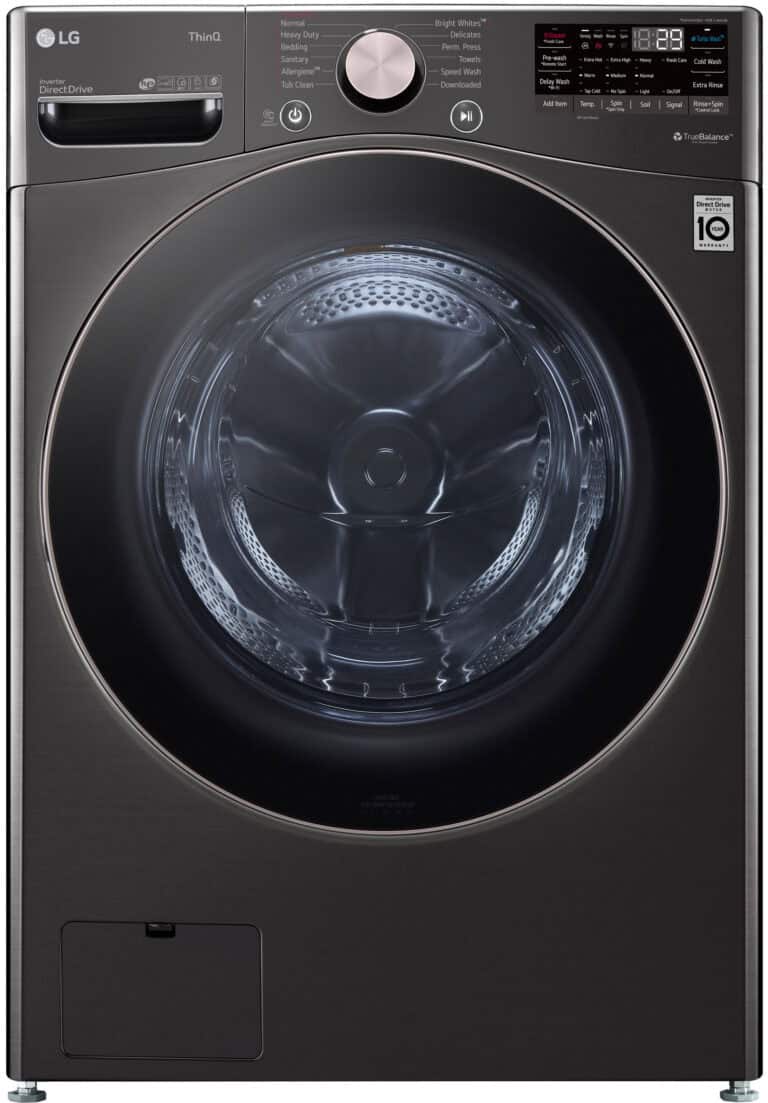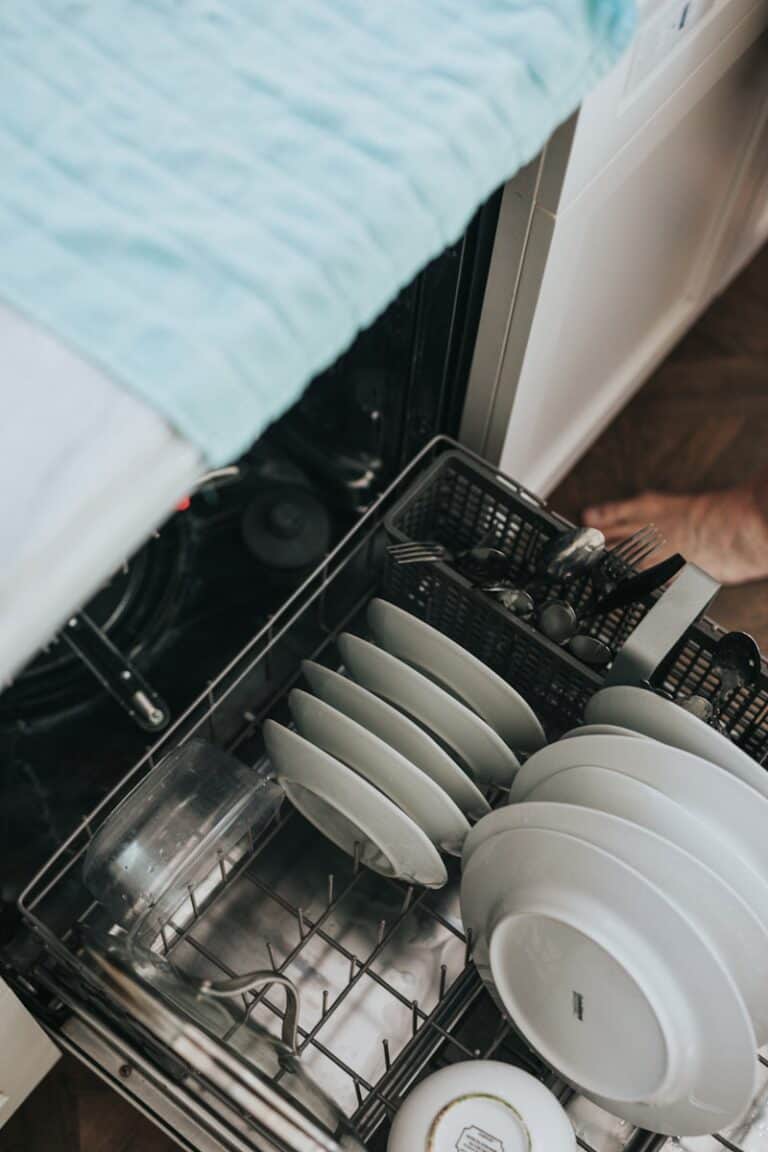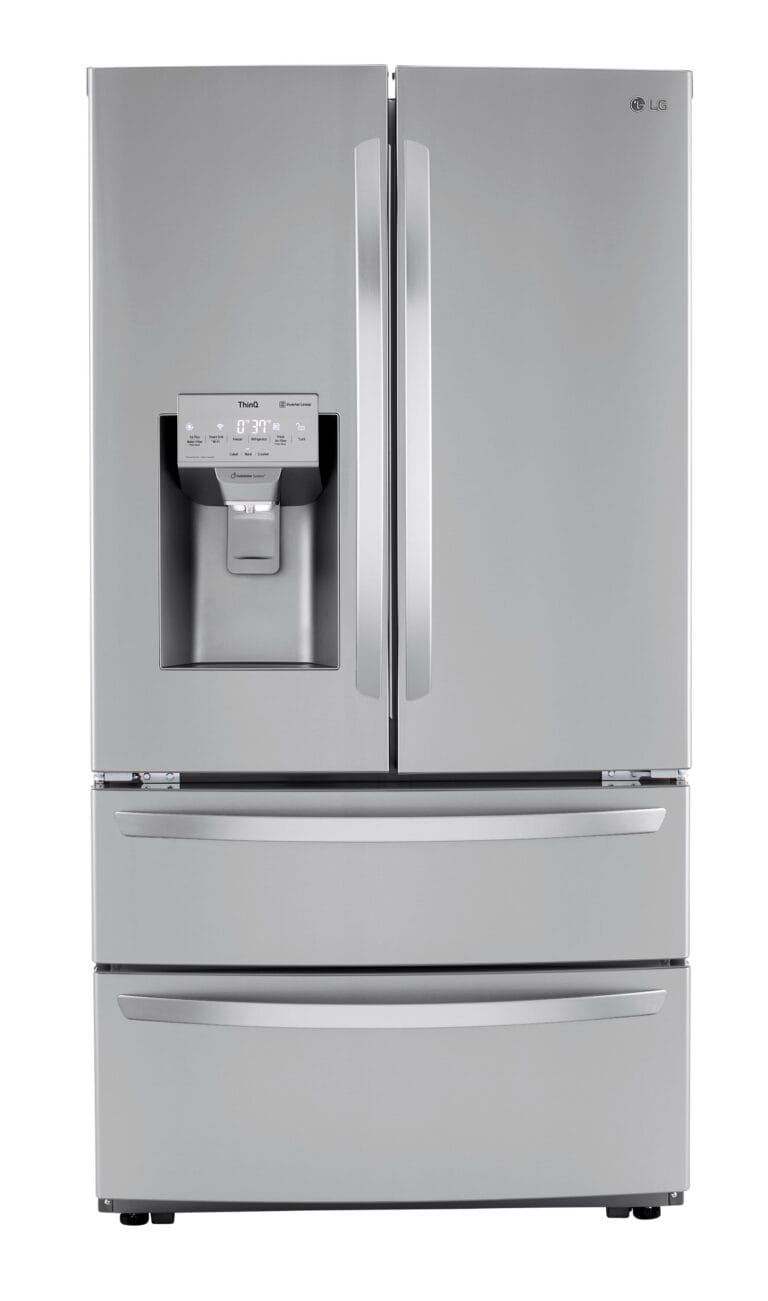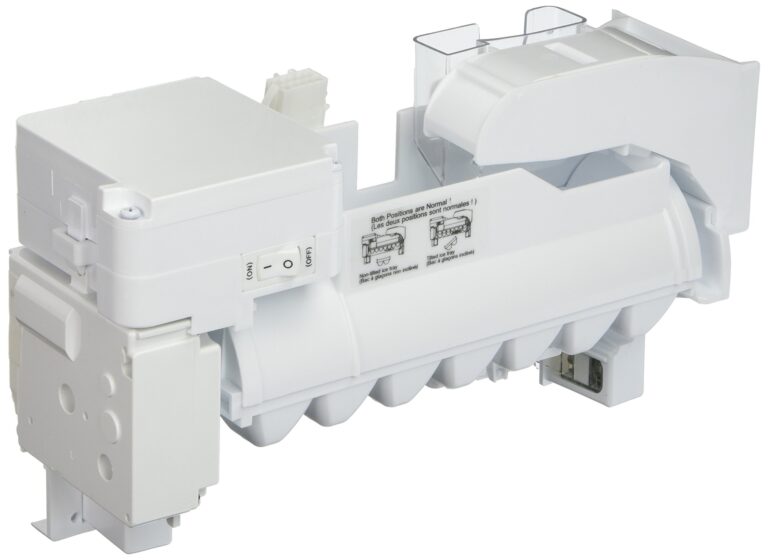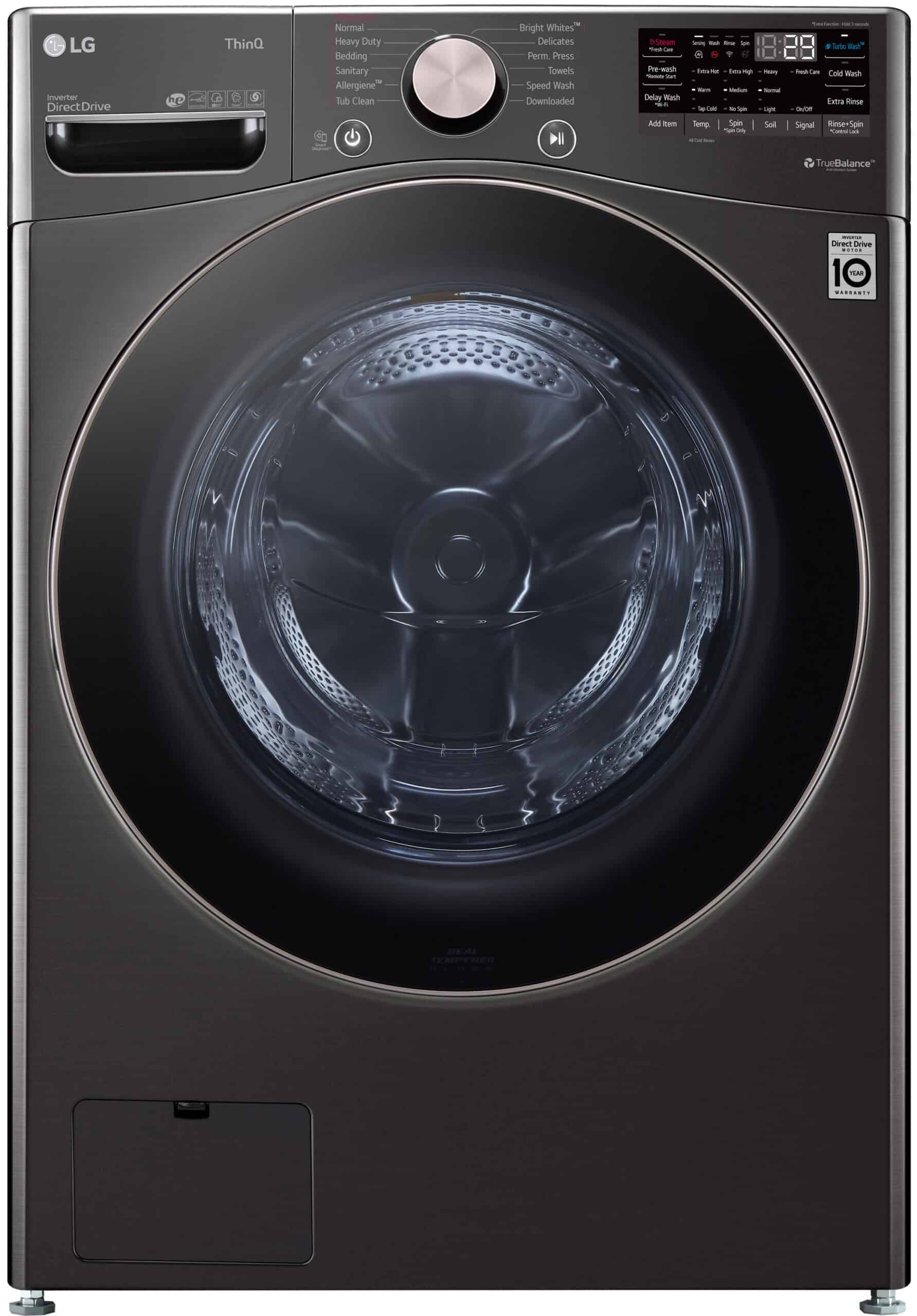
Front load washers can develop unpleasant odors and mold if not cleaned regularly. That damp, enclosed environment creates the perfect breeding ground for bacteria and mildew, especially around the rubber gasket where water tends to pool. To clean a front load washer properly, you’ll need to wipe down the rubber seal with white vinegar, run an empty hot water cycle with vinegar in the drum, and clean the detergent dispensers and filter at least once a month.
Many people don’t realize their washing machine needs regular cleaning until that musty smell has already developed. The good news is that cleaning your front loader doesn’t require special products – simple ingredients like white vinegar and baking soda work wonderfully. The rubber gaskets with folds need special attention as they often hide mold and residue in their creases.
Regular maintenance prevents bigger problems down the road. By leaving the door ajar between uses and wiping down the gasket after each cycle, you’ll drastically reduce moisture buildup. This simple habit, combined with deep cleaning every few months, will keep your washer fresh and functioning properly for years to come.
Why Cleaning Matters
Front-load washers are efficient, but their design can trap moisture, detergent residue, and lint—especially around the rubber door gasket. Over time, this buildup can cause musty smells and even mold growth. Regular cleaning prevents this and helps your washer run efficiently.
🧰 What You’ll Need
- White vinegar or hydrogen peroxide
- Baking soda
- Microfiber cloth or sponge
- Old toothbrush
- Spray bottle
- Optional: bleach or washing machine cleaning tablets
- Small bowl
- Gloves (optional)
🧼 Step-by-Step Cleaning Guide
1. Clean the Gasket (Door Seal)
- Open the washer door and pull back the rubber gasket.
- Wipe away any visible debris (lint, hair, coins, etc.).
- Mix a solution of equal parts white vinegar and water in a spray bottle.
- Spray the gasket thoroughly, including folds and crevices.
- Scrub gently with a toothbrush or cloth to remove mold and grime.
- Wipe dry with a clean towel.
💡 Tip: For stubborn mold, let vinegar sit for 10–15 minutes before scrubbing.
2. Clean the Drum
- Pour 2 cups of white vinegar directly into the drum.
- Run a hot wash cycle (or a “tub clean” cycle if your washer has one).
- After the cycle finishes, sprinkle ½ cup baking soda into the drum.
- Run another hot rinse cycle to neutralize odors and remove residue.
🧴 Alternative: Use a commercial washer cleaning tablet instead of vinegar and baking soda if preferred.
3. Clean the Detergent Dispenser
- Remove the detergent drawer completely (check your manual if unsure).
- Soak it in warm, soapy water for 10–15 minutes.
- Scrub away buildup with a toothbrush.
- Rinse and dry thoroughly before reinstalling.
4. Clean the Filter (Drain Pump Filter)
- Locate the filter access panel (usually at the bottom front of the washer).
- Place a towel or shallow pan underneath to catch water.
- Unscrew the filter cap and remove any lint, coins, or debris.
- Rinse the filter under warm water, then reinstall.
5. Wipe Down the Exterior
Use a damp microfiber cloth and mild detergent to wipe the washer’s exterior, control panel, and door.
🗓️ Maintenance Tips
- Leave the door open after each wash to let the drum dry and prevent mildew.
- Clean monthly using vinegar or washer tablets.
- Use less detergent—too much can cause buildup.
- Wipe the gasket weekly to remove moisture.
✅ Summary
Regular cleaning keeps your front-load washer odor-free and efficient. A quick monthly deep clean with vinegar, baking soda, and a bit of elbow grease is all it takes to keep your washer fresh and your clothes smelling great.
Sources:
- WikiHow – How to Clean a Front Load Washer
- Martha Stewart – How to Clean a Front-Load Washer
- Southern Living – How to Clean a Front-Load Washer
- Whirlpool – How to Clean Your Front Load Washer
Key Takeaways
- Clean the rubber gasket regularly with vinegar to prevent mold growth and odors in your front load washer.
- Run monthly cleaning cycles with vinegar and wipe down dispensers to remove soap buildup and residue.
- Leave the washer door open between uses to allow airflow and prevent moisture accumulation.
Preparing Your Washer for Cleaning
Before diving into the cleaning process, you’ll need to get your washer ready and gather the right supplies. Proper preparation ensures a thorough clean and helps maintain your front load washer’s performance.
Emptying the Washer
First, make sure your washing machine is completely empty. Remove any clothing, detergent pods, or other items that might be inside the drum. Check small crevices where socks or other small garments might be hiding.
Unplug the washer for safety if you plan to clean external components thoroughly. This step is particularly important if you’ll be reaching into tight spaces.
Next, remove the detergent drawer completely if your model allows it. This drawer often collects residue and can be a breeding ground for mold and mildew. Set it aside to clean separately.
Finally, check and clean the drain filter if your washer has an accessible one. This is usually located near the bottom front of the machine behind a small panel. Have a towel ready as some water may spill out when you open it.
Gathering Cleaning Supplies
For effective cleaning, you’ll need several key supplies. Prepare the following items:
- White vinegar: Great for removing odors and dissolving soap scum
- Baking soda: Helps neutralize odors and provides gentle scrubbing power
- Bleach (chlorine or oxygen): For sanitizing and removing tough mold
- Microfiber cloths or old towels: For wiping down surfaces
- Cleaning tablets: Commercial washer cleaners specifically designed for front loaders
- Small brush or old toothbrush: For scrubbing the rubber gasket and crevices
You might also want to have distilled white vinegar ready for spraying the rubber gasket. Some people prefer specialized washer cleaner tablets instead of household ingredients.
Keep a bucket nearby for soaking removable parts like the detergent drawer. Having rubber gloves is also recommended to protect your hands from cleaning chemicals, especially if you’ll be using bleach.
Cleaning the Washer Drum
The drum of your front load washer needs regular cleaning to prevent mold, mildew, and unpleasant odors. Properly maintaining this area will extend your machine’s life and keep your clothes truly clean.
Running a Cleaning Cycle
Most front load washers have a built-in cleaning cycle specifically designed to sanitize the drum. This cycle typically uses higher temperatures and longer washing times than regular cycles.
To run a cleaning cycle:
- Make sure the drum is completely empty of clothes and items
- Select the “Clean Cycle,” “Self-Clean,” or “Drum Clean” setting on your machine
- For best results, use hot water during this cycle to help kill bacteria
- Some machines may prompt you to add a cleaning agent at this point
- Let the cycle run completely – it may take between 1-2 hours
Routine cleaning cycles should be performed monthly, though you might need to do it more often if you notice musty smells or visible residue.
Using Cleaning Agents
The right cleaning agents make a significant difference in how effectively you clean your washer drum.
White vinegar is excellent for removing soap scum and mineral deposits. Pour 2 cups directly into the empty drum before running a cleaning cycle. The acidic properties help dissolve buildup without damaging components.
For deeper cleaning, chlorine bleach can be effective against mold and mildew. Use 1/2 cup in your machine’s detergent dispenser during a cleaning cycle. Never mix bleach with vinegar as this creates toxic fumes.
Commercial washer cleaners are also available and specifically formulated for front load washers. Follow the package instructions carefully.
For stubborn stains or grime in the drum, you might need to manually scrub hard-to-reach areas using a soft brush and a mixture of baking soda and water.
Maintaining the Gasket and Dispensers
Regular maintenance of your washer’s gasket and dispensers prevents mold growth and ensures your machine runs efficiently. These often-neglected areas can harbor soap residue and moisture that lead to unpleasant odors.
Wiping the Rubber Gasket
The rubber gasket on your front-load washing machine requires frequent attention to prevent mold and mildew buildup. After each wash cycle, take a dry cloth and wipe around the entire gasket to remove excess moisture. Pay special attention to the bottom section where water tends to pool.
For deeper cleaning, mix equal parts distilled white vinegar and water in a spray bottle. Spray this solution onto the gasket and wipe with a microfiber cloth. For stubborn soap scum or black spots, gently pull back the rubber folds and clean thoroughly.
You can also use an all-purpose cleaner for tougher stains, but avoid bleach as it may damage the rubber over time. For a DIY option, mix white vinegar, water, and a few drops of dish soap in a spray bottle.
Cleaning the Dispenser Drawers
Your detergent dispenser drawer collects residue from fabric softeners, detergents, and other laundry products. To clean it properly, first remove the drawer completely—most models have a release tab that allows you to pull it out.
Soak the drawer in warm water with a bit of dish soap for 15-20 minutes. Use an old toothbrush to scrub away any buildup in corners and crevices. Don’t forget to clean the cavity where the drawer sits, as this area often develops mold.
Rinse everything thoroughly and dry completely before reinserting. For persistent odors or stains, create a paste using baking soda and water. Apply this to problem areas, let sit for 10 minutes, then scrub and rinse.
Aim to clean your dispenser drawer monthly to prevent product buildup that can affect your washing machine’s performance.
Addressing Filters and Drainage
Maintaining your front load washer’s filter and drainage system prevents unpleasant odors and extends your machine’s life. Regular cleaning removes built-up lint and debris that can cause serious problems over time.
Inspecting the Pump Filter
Most front load washers have a small access door located at the bottom front of the machine. To clean the pump filter, first unplug the washer or turn off the power. Place a shallow pan or towels under the filter area to catch water. The filter door typically opens with a small lever or button.
Once open, you’ll see a small hose and the filter cap. Before removing the filter:
- Pull out the drain hose if your model has one
- Place the hose end in a bucket
- Remove any drain plug to release trapped water
Now unscrew the filter by turning counterclockwise. You might be surprised by what you find—coins, buttons, and lint commonly clog these filters. Rinse the filter thoroughly under running water to remove all debris.
Ensuring Proper Drainage
After cleaning the filter, check the filter housing for additional debris. Use a flashlight to inspect the cavity and remove any visible lint or foreign objects with your fingers or tweezers. The pump impeller (small fan-like device) should spin freely when gently pushed.
Install the clean filter by turning clockwise until snug—but don’t overtighten. Secure any drain hoses and close the access panel firmly.
For optimal performance, clean your filter monthly or whenever you notice slow draining. If your washer still drains poorly after cleaning, the main drain hose might be kinked or blocked.
You can also run a monthly washer cleaning cycle with two cups of baking soda to help prevent debris buildup in the drainage system. This simple maintenance step keeps your washer smelling fresh and functioning efficiently.
Cleaning the Exterior and Accessories
Keeping your front load washer’s exterior clean not only makes your laundry room look better but also prevents dirt from transferring to your clean clothes. Regular maintenance of the exterior and attachable parts extends the life of your machine.
Wiping the Washer’s Exterior
The exterior of your front load washer needs regular attention to prevent buildup of dust, detergent residue, and water spots. First, lightly dust the entire surface area of your washer with a dry microfiber cloth. This removes loose particles before introducing any moisture.
For stubborn spots, spray a small amount of all-purpose cleaner onto your cloth—never directly onto the washer. This prevents excess liquid from seeping into electronic components. Wipe in the direction of the grain if you have a stainless steel washer.
Pay special attention to the control panel and buttons where finger oils accumulate. Use a slightly damp cloth with a drop of mild dish soap for this area. For hard-to-reach crevices around buttons, try using an old, clean toothbrush.
Don’t forget the door handle and the area around the door seal, as these spots often collect detergent drips and fingerprints.
Maintaining Any Attachable Parts
The detergent dispenser drawer requires regular cleaning to prevent mold and detergent buildup. Most front load washers allow you to remove this drawer completely. Press the release tab and pull it out gently.
Rinse the drawer under warm water and use a toothbrush to scrub away residue in corners and crevices. Before reinserting:
- Dry completely to prevent mold growth
- Check for any cracks or damage
- Ensure all compartments are clean
If your washer has attachable accessories like stacking kits or pedestals, wipe these down regularly with a damp microfiber cloth. For pedestal drawers, remove items and vacuum out lint and dust before wiping down the interior.
Check any water input hoses for signs of wear or mineral buildup around the connections. Wipe these carefully and ensure they’re properly attached to prevent leaks.
Preventing Odors and Residue Buildup
Front-load washers can develop unpleasant odors and buildup if not properly maintained. Taking preventative steps will keep your machine clean and efficient, extending its life while ensuring your clothes come out fresh every time.
Leaving the Door Open for Airflow
One of the simplest yet most effective ways to prevent odors in your front-load washer is to keep the door open after each use. This allows moisture to evaporate instead of being trapped inside where it can promote mold and mildew growth.
If you have small children or pets, consider leaving the door slightly ajar rather than wide open for safety reasons.
The rubber gasket around the door is particularly prone to trapping moisture and developing mildew. Wipe this area dry with a clean towel after completing your laundry.
Avoid using excessive amounts of detergent or fabric softener as these products can leave residue that feeds odor-causing bacteria. Using HE (High Efficiency) detergent specifically designed for front-loaders can help reduce buildup.
Regular Cleaning Schedule
Establishing a consistent cleaning routine prevents odors before they start. Mark your calendar for monthly maintenance to keep your washer fresh.
Run a cleaning cycle using either:
- Commercial washer cleaner like Affresh
- 2 cups of white vinegar (poured directly into the drum)
- 1/2 cup of baking soda (sprinkled in the drum)
Select the “clean cycle” or hottest water setting available, as heat helps eliminate bacteria and break down buildup.
Don’t forget to clean the detergent dispenser by removing it (if possible) and rinsing it thoroughly. This area often develops mold but takes just minutes to clean.
Check and clean the drain pump filter every 1-2 months to remove lint, coins, and gunk that contribute to unpleasant smells.
Additional Cleaning Tips
Beyond basic cleaning routines, your front-load washer may need special attention for persistent problems and deep cleaning needs.
Handling Stubborn Stains and Odors
Musty smells in your washer often come from hidden mold and bacteria. To tackle stubborn odors, mix 1/4 cup baking soda with 1/4 cup water to form a paste. Wear rubber gloves and apply this paste to any visible mold or mildew, especially around the rubber gasket.
For particularly tough odors, try this deep cleaning method:
- Fill the detergent dispenser with 1 cup of white vinegar
- Run a hot water cycle
- Follow with another hot cycle adding 1/2 cup of bleach
Don’t forget about the detergent drawer! Remove it completely and soak in hot water with a tablespoon of vinegar to dissolve soap residue. A toothbrush works perfectly for scrubbing hard-to-reach corners where bacteria hide.
Using Specialized Washing Machine Cleaners
Commercial washing machine cleaners offer convenience and powerful cleaning agents designed specifically for front-loaders. These products target soap scum, bacteria, and mineral buildup that cause odors and performance issues.
Look for cleaners containing enzymes that break down organic matter. Most commercial cleaners come in tablet or powder form – simply place them in the drum and run a hot cleaning cycle.
Popular options include:
- Affresh Washing Machine Cleaner
- OxiClean Washing Machine Cleaner
- Tide Washing Machine Cleaner
For best results, use these cleaners monthly. Between deep cleanings, wipe down the door and gasket after each use. Leave the door slightly open when not in use to prevent moisture buildup that leads to mold growth and unpleasant odors.
Best Practices for Washer Maintenance
Keeping your front load washer in top condition requires regular care and attention to specific components. Proper maintenance prevents mold, bad odors, and extends the life of your machine.
Utilizing the Self-Clean Feature
Most modern front load washers come with a self-cleaning cycle specifically designed to remove mold and mildew. Run this cycle monthly to prevent build-up of soap residue and bacteria.
If your machine doesn’t have this feature, you can create your own cleaning cycle by:
- Adding two cups of white vinegar to the detergent dispenser
- Running a hot water cycle at the highest temperature setting
- Following with a rinse cycle to remove any vinegar residue
For stubborn odors, use washing machine cleaners specifically formulated for front loaders. These products help eliminate bacteria that regular detergent can’t remove.
Never mix cleaning agents like bleach and vinegar as this creates toxic fumes.
General Maintenance Routines
Daily and weekly habits make a significant difference in your washer’s longevity. Leave the washer door ajar after each use to allow air circulation and prevent moisture buildup.
Wipe down the rubber gasket around the door weekly using a solution of equal parts water and vinegar. Pay special attention to folds where moisture collects. Use Q-tips for hard-to-reach areas.
Clean your detergent dispenser monthly by removing it (if possible) and soaking in warm water.
Check and clean the filter every 1-2 months. This small component located typically at the front bottom of your machine can trap coins, buttons, and debris.
Important maintenance tips:
- Only use HE (High Efficiency) detergent in front loaders
- Remove wet laundry promptly after cycles complete
- Run occasional hot water cycles even if you typically wash in cold
- Balance loads properly to prevent excessive vibration
Frequently Asked Questions
Keeping your front-load washer clean is essential for preventing odors and maintaining optimal performance. Here are answers to common questions about proper cleaning techniques.
What steps are involved in cleaning the rubber gasket of a front-load washing machine?
To clean the rubber gasket, start by wiping the entire seal with a damp cloth to remove visible debris and lint. Pay special attention to the folds where moisture and grime collect.
Mix equal parts water and white vinegar in a spray bottle and spray the solution on the gasket. Let it sit for a few minutes to dissolve soap scum and mildew.
Scrub gently with a soft brush or old toothbrush to remove stubborn residue, then wipe dry with a clean cloth. For persistent mildew, you may need to use a diluted bleach solution, but make sure to wear gloves.
What is the recommended method for deodorizing a front-load washer?
The most effective way to deodorize your front-load washer is to run a hot water cleaning cycle with two cups of white vinegar added to the drum. This helps eliminate odor-causing bacteria and dissolve soap buildup.
For persistent odors, sprinkle half a cup of baking soda directly into the drum after the vinegar cycle and run another hot water cycle. The combination neutralizes odors effectively.
Leave the washer door open between uses to promote air circulation and prevent musty smells. Remove wet clothes promptly after washing to prevent bacterial growth that causes odors.
How should one clean the filter of a front-load washing machine?
Locate the access panel for your washer’s filter, usually at the bottom front of the machine. Place a shallow pan and towels underneath to catch water that will drain out.
Turn the filter knob counterclockwise to remove it, being prepared for some water spillage. Remove any debris, coins, buttons, or lint that has accumulated in the filter.
Rinse the filter thoroughly under running water to remove smaller particles and soap residue. Wipe the filter housing with a cloth before reinstalling the clean filter and securing it tightly.
Which cleaning agents are best for maintaining a front-load washer?
White vinegar is highly effective for regular maintenance as it removes soap scum and prevents odors without damaging washer components. It’s affordable and environmentally friendly.
Baking soda works well for neutralizing odors and providing mild abrasion to remove buildup. The combination of vinegar and baking soda is particularly effective.
Commercial washer cleaning tablets are convenient and formulated specifically for washing machines. These tablets help remove buildup and sanitize hard-to-reach areas.
What is the procedure for cleaning a front-load washer with vinegar and baking soda?
Begin by adding two cups of white vinegar directly to the washer drum. Run a hot water cycle on the highest setting, which helps the vinegar break down soap residue and mineral deposits.
After the first cycle completes, add half a cup of baking soda to the drum and run a second hot water cycle. This combination effectively cleans and deodorizes your machine.
Wipe down the interior of the drum, door, and gasket with a clean cloth after the cycles are complete. This removes any loosened debris that didn’t flush away during the cleaning cycles.
How often should a front-load washing machine be cleaned for optimal performance?
For regular maintenance, run a cleaning cycle with vinegar or a commercial cleaner monthly to prevent buildup and odors. This frequency is recommended by most manufacturers.
Clean the rubber gasket weekly by wiping it down to remove moisture and debris. This simple step significantly reduces mildew growth and associated odors.
Clean the detergent dispenser and filter every 1-3 months depending on usage. Households that do more laundry should clean these components more frequently to prevent clogs and ensure proper operation.

